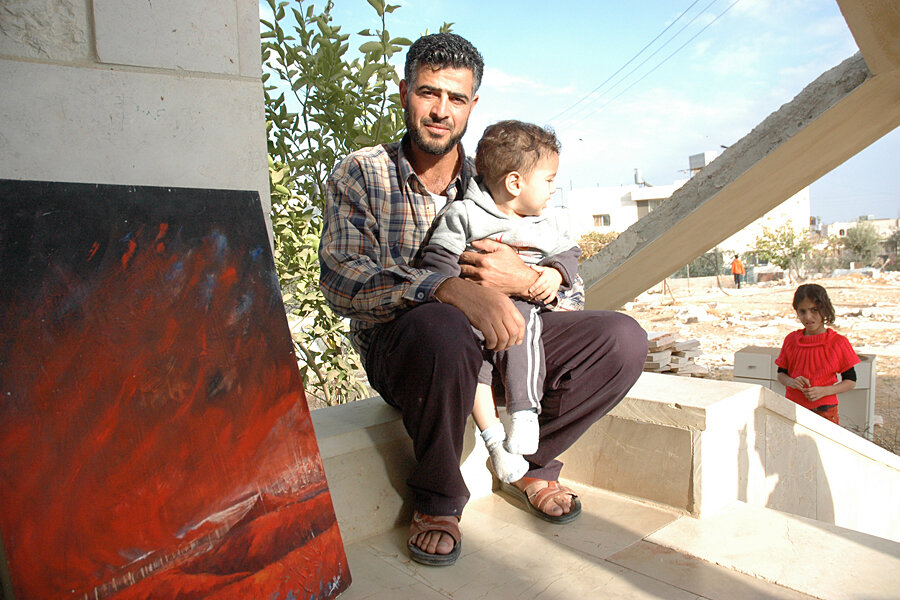Palestinian artist resists Israeli occupation – with his paintbrush
Loading...
| Zaatara, West Bank
Step over the threshold of Ali Al-Wahsh’s home, and your eye will be immediately drawn to the brilliant reds in a painting on the wall. A captivating mountain scene, perhaps just before a storm, it’s just one of several art pieces that lend an elegance to his modest home, located in a quiet Palestinian village outside Bethlehem. The painter? Mr. Al-Wahsh himself.
He cultivated that talent while surrounded by very different walls – those of an Israeli prison. Arrested in 2002 during the second intifada, or Palestinian uprising, Al-Wahsh – then 20 years old – decided to use his abundant spare time to hone his artistic skills. But he had neither a teacher nor proper materials, at least at first.
“I used to burn bread to turn it into coal to draw,” says Al-Wahsh, who would draw portraits of his fellow inmates’ children, based on photographs they gave him. After two years Israeli authorities at last allowed his family to visit him, and they brought him new supplies.
When he got out of jail in 2007, he went to Al Quds University in Jerusalem to study art, focusing on his two favorite mediums: painting and mosaics. For him, art has proved to be not only a pastime in prison but also a way to escape the confines of living under Israeli occupation in the West Bank, where many Palestinians struggle to hold on to not just their land but also their dignity.
“Because of the occupation, the relationship between mankind and the land gets stronger,” says Al-Wahsh, whose work includes murals on the Israeli separation wall that runs through Jerusalem and Bethlehem. “Therefore, in every painting I highlight the land.”
But lately, between his disappointment in the political situation and his responsibilities as a young husband and father, he has barely been painting. When he does, it’s hard to sell his work in nearby Bethlehem; two painted canvasses are just sitting in a corner of his living room. And while the Palestinian Authority Ministry of Culture gave him a certificate recognizing the quality of his work, there is no state support for artists like himself, he says.
“Nobody cares about art, especially because of the situation,” says Al-Wahsh, sitting with a nephew who says his brother died at an Israeli checkpoint while trying to get to an Israeli hospital after a bad car accident. “People are interested in making money and supporting families.”
Still, he hasn’t given up on art altogether, even though he’s busy being a good father to his first child, 1-year-old Jawwad.
“I will teach him to paint, of course,” he says, before leaving to wake Jawwad up from his nap.








